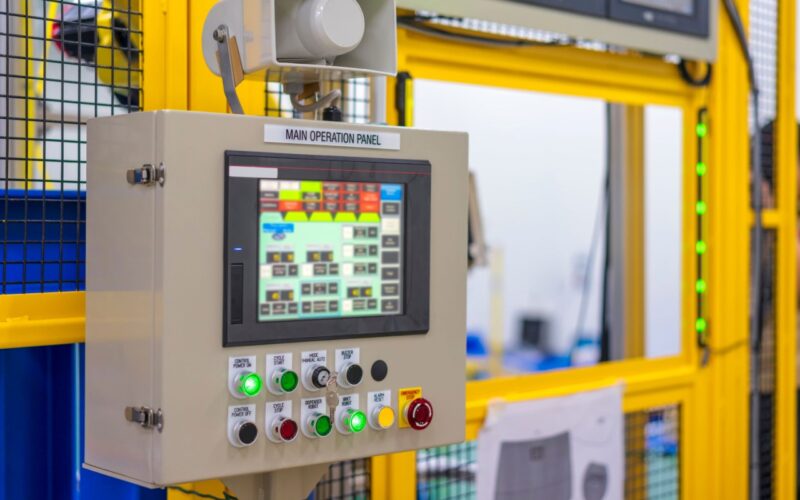When buying LCD displays, the Minimum Order Quantity (MOQ) is a key concern for most buyers, especially for small and medium-sized businesses with limited budgets and product development scales. MOQ can often become a major obstacle in negotiations. However, with the rapid iteration of smart products and growing demand for LCDs, many suppliers now offer flexible MOQ policies. Today, we’ll detail several negotiation strategies for small-batch LCD purchases.
What Influences LCD MOQ?
First, let’s understand the key factors affecting LCD MOQ. Knowing these will help you negotiate more effectively. We’ll analyze them by application scenarios, product size, and custom vs. standard products.
1. Consumer Electronics: Standardization Drives Low MOQ
Typical Scenarios: Smartphones, smartwatches, portable devices
Size Range: 1.5–6 inches
MOQ Characteristics:
Standard Products: Mature models (e.g., 2.8-inch TFT) typically have an MOQ of 500–1,000 pieces due to high production line automation, which spreads costs across large batches.
Customization: irregular cutting or special interfaces raise MOQ to 2,000+ pieces due to the need for new molds.

2. Industrial Control: Customization Raises MOQ
Typical Scenarios: Industrial meters, smart terminals, outdoor equipment
Size Range: 3.5–10.1 inches
MOQ Characteristics:
Standard Products: Universal models (e.g., 3.5-inch TFT) have an MOQ of 1,000–2,000 pieces, as they must meet industrial-grade requirements like wide temperature ranges (-30~85°C) and shock resistance, complicating production. Larger sizes may offer MOQs as low as 500–1,000 pieces.
Customization: Irregular sizes or special interfaces typically require MOQs of ≥2,000 pieces.
3. Automotive Displays: Reliability and Size Double Impact
Typical Scenarios: Central control screens, dashboards, rearview mirrors
Size Range: 4.3–12.3 inches (e.g., 7-inch 1024×600, 10.25-inch 1920×720)
MOQ Characteristics:
Small Sizes (4.3–7 inches): Standard product MOQ is 1,000–2,000 pieces.
Large Sizes (10+ inches): Curved designs or high resolutions (e.g., 12.3-inch 1920×720) require MOQs of ≥2,000 pieces and vehicle certification (e.g., AEC-Q200), increasing mold costs by 20–40%.
Market Trend: Rising EV demand is upgrading automotive LCDs. By 2025, global automotive panel sales are expected to grow by 16%, with suppliers becoming more open to small batches (e.g., 500 pieces), though unit prices may rise 10–15%.
4. Medical Equipment: High Certification Thresholds Dictate High MOQ
Typical Scenarios: Patient monitors, surgical equipment, portable diagnostic devices
Size Range: 2.0–15.6 inches (e.g., 5-inch WVGA, 10.4-inch XGA)
MOQ Characteristics:
Small Sizes (2.0–3.5 inches): Standard products for portable devices (e.g., oximeters) have an MOQ of 1,000–2,000 pieces. Wide-temperature (-20~70°C) or shock-resistant models require ≥3,000 pieces.
Medium Sizes (4.3–10.1 inches): 5–7-inch screens for medical monitors have a customization MOQ of 2,000–5,000 pieces and require medical certifications (e.g., UL 60601).
Large Sizes (10+ inches): Hospital equipment (e.g., imaging workstations) requires MOQs of ≥1,000 pieces due to high resolution (e.g., 15.6-inch 4K) and long lifespan (50,000+ hours).
Procurement Tip: Prioritize suppliers with ISO 13485 certification. Some vendors (e.g., Zhongyou Touch Display in Hangzhou) offer phased delivery for medical orders (e.g., 500-piece samples first).
5. Smart Home: Flexible Procurement Lowers MOQ
Typical Scenarios: Smart switches, central control panels, home appliance screens
Size Range: 2.8–6 inches (e.g., 2.8-inch 240×320, 6-inch 1080×2160)
MOQ Characteristics:
Standard Products: Universal models (e.g., 3.5-inch TFT) have an MOQ of 500–1,000 pieces. Some suppliers allow mixed batches.
Customization: Irregular sizes or special functions (e.g., capacitive touch) require MOQs of 1,000–2,000 pieces.
Practical Data & Supplier Flexibility
The above analysis is based on industry-wide trends, but each supplier may offer unique MOQ policies. Displaysell, for example, specializes in serving SMEs and provides highly flexible MOQs, significantly reducing customer development costs and aiding business growth for small enterprises.
How to Approach MOQ Negotiations?
Prioritize Standard Products
If your product has no special requirements, choose standard products. As noted, standard items across all scenarios and sizes have lower MOQs and faster delivery than custom ones.
Opt for Semi-Customization in Automotive/Industrial Sectors
In industries like automotive and industrial control, where customization is often necessary, use semi-customization: select original branded glass/IC (e.g., AUO, BOE, Innolux) for critical components and partner with suppliers like Displaysell to customize non-core structures (see previous article on LCD structures for details). This allows more flexible MOQs.
Consolidate Orders for Mass Production
For clients already in mass production with low annual demand or unhappy with their current supplier, negotiate with Zhongyou Touch Display. If materials are shared across multiple products, combine orders with other clients to meet MOQ.
Leverage Flexible Stock Policies
For highly specialized products, suppliers may offer material reservation services. Displaysell’s flexible MOQ policies ensure there’s a solution for every need.
Conclusion: Understanding MOQ drivers and leveraging supplier flexibility can help SMEs overcome procurement barriers. By balancing standardization, semi-customization, and order consolidation, you can optimize costs while accessing high-quality LCD solutions.
Looking for flexible LCD suppliers? Contact Displaysell today for tailored MOQ solutions.
